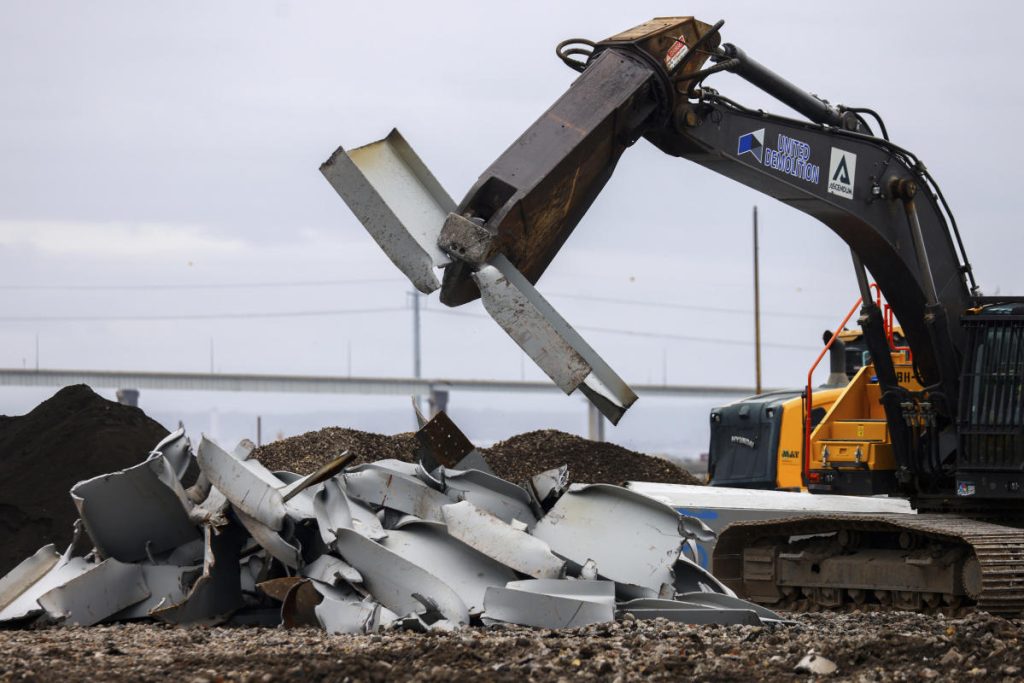Crews in Sparrows Point, Maryland are working to haul wreckage from the collapsed Francis Scott Key Bridge to a nearby salvage yard using the largest crane on the Eastern Seaboard. The heaviest section of wreckage weighed about 450 tons, and workers are using propane torches and giant shears to disassemble the metal trusses. The Chesapeake 1000, a floating crane with a storied history, is assisting in the operation. The Key Bridge, which took five years to construct in the 1970s, collapsed on March 26, resulting in the deaths of six construction workers. Four bodies have been recovered, and salvage crews are hoping to recover the remaining two once more debris has been removed. The goal is to open a temporary channel for commercial traffic through the Port of Baltimore later this month, with the main channel expected to reopen by the end of May.
Over 1,000 tons of steel have been removed from the waterway so far, but the operations are described as tedious, dangerous, and complex. Workers at Tradepoint Atlantic, the only maritime shipping terminal currently operating in the Port of Baltimore, are facing challenges such as unclear underwater debris, rebar, and concrete that pose potential dangers during extraction. Divers are surveying the wreckage to devise a safe extraction plan, while the salvage team is also working to remove containers from the cargo ship Dali before lifting steel spans off its bow and refloating the vessel. Resolve Marine, which is involved in refloating the ship, emphasizes the importance of removing the Dali quickly to mitigate any dynamic hazards it may pose.
The salvage operation is a massive undertaking that requires careful planning and execution to ensure the safety of workers and to prevent further environmental damage. The recovery process has been slow and methodical due to the uncertain conditions underwater and the need to prioritize safety. Salvage crews are working against the clock to remove debris from the collapse site and reopen the port for commercial traffic. The tragedy of the Key Bridge collapse has prompted a collective effort to address the aftermath and restore normalcy to the affected area. The salvage team is focused on completing the task efficiently while respecting the lives lost in the accident.
The work at Tradepoint Atlantic highlights the resilience and collaboration of the salvage crews and port officials in responding to the crisis following the bridge collapse. The recovery efforts have required a cohesive team effort to address the challenges posed by dismantling the wrecked bridge and removing debris from the waterway. The salvage operation serves as a testament to the dedication of those involved in working towards a common goal of restoring normalcy to the Port of Baltimore and the surrounding area. The tragedy of the collapse has mobilized a strong response from various organizations and government agencies to support the recovery efforts and ensure the safe and efficient removal of wreckage from the waterway.
The story of the Key Bridge collapse and the subsequent salvage operations serve as a reminder of the risks and challenges faced in maritime construction and infrastructure projects. The incident underscores the importance of stringent safety measures and monitoring protocols to prevent such disasters from occurring in the future. The salvage teams’ meticulous approach to dismantling the collapsed bridge reflects their commitment to ensuring the safety of workers involved and the successful recovery of the site. The resilience and determination of the salvage crews and port officials in addressing the aftermath of the collapse demonstrate their dedication to restoring the affected area and preventing similar incidents from happening again in the future. The recovery efforts are a testament to the strength and unity of the maritime community in responding to unforeseen disasters and working towards comprehensive solutions.


